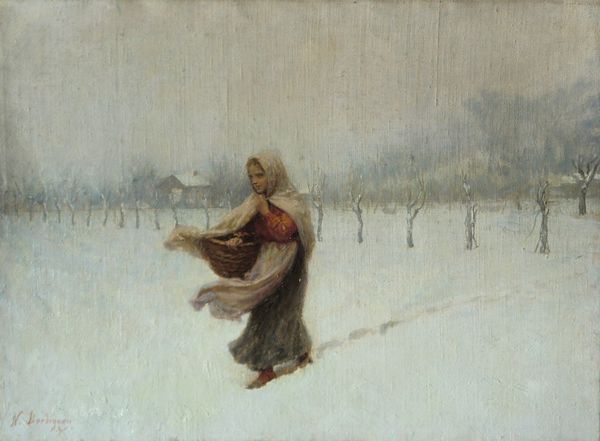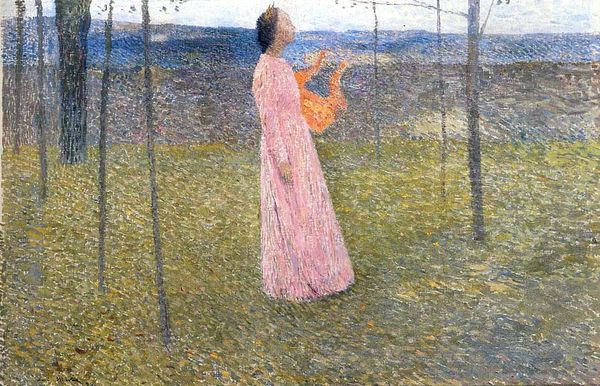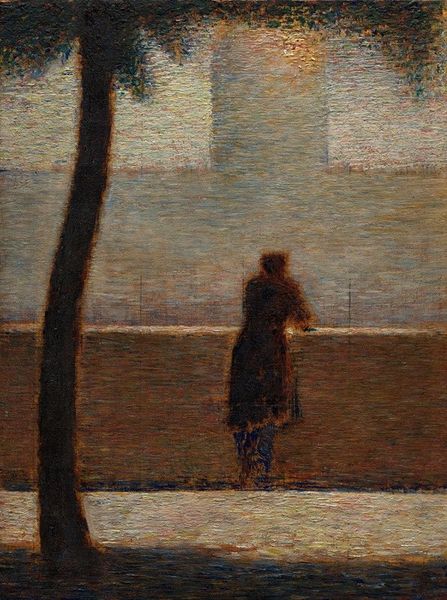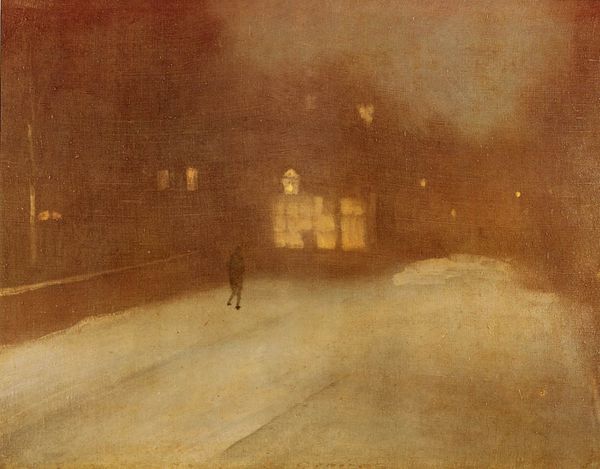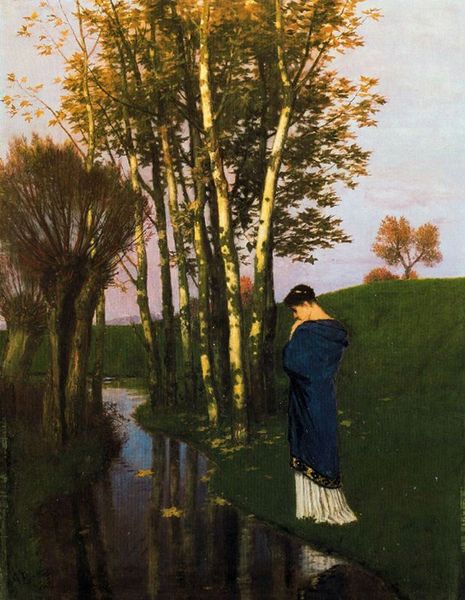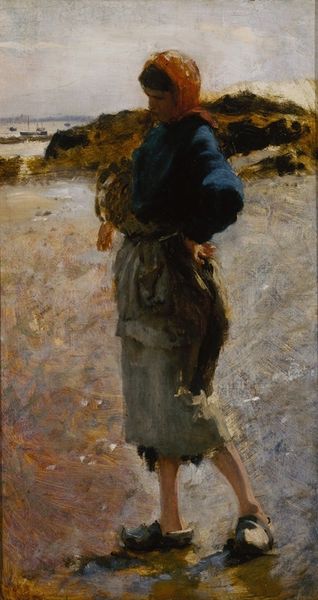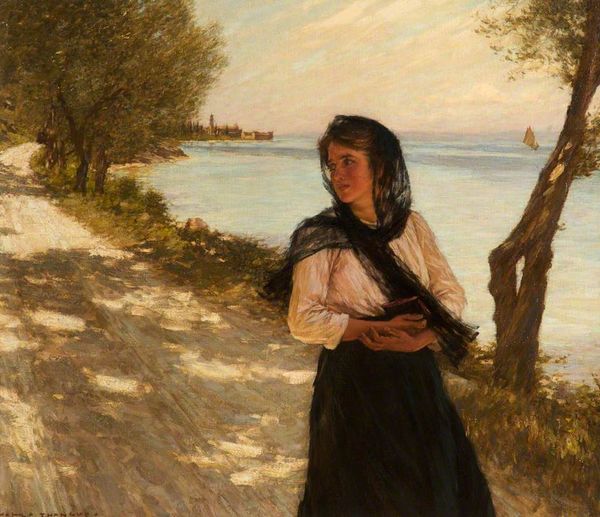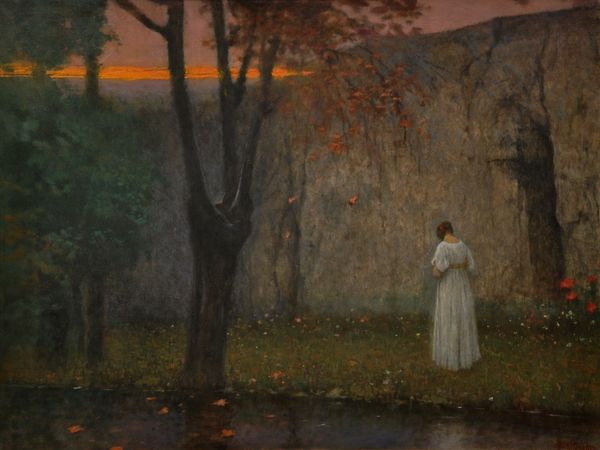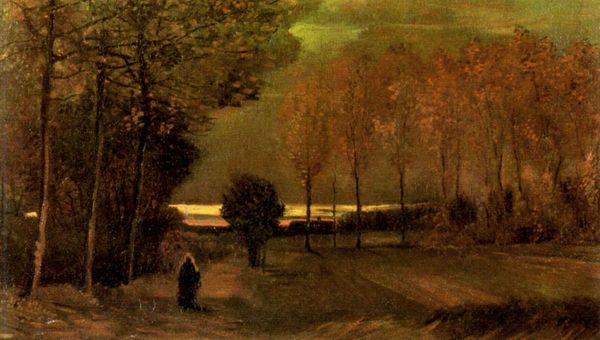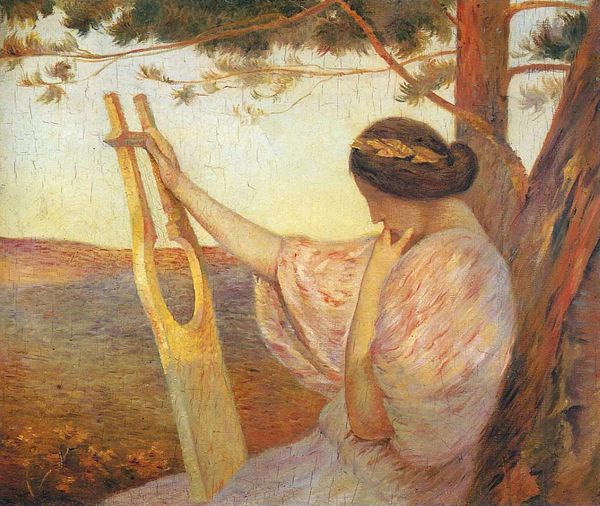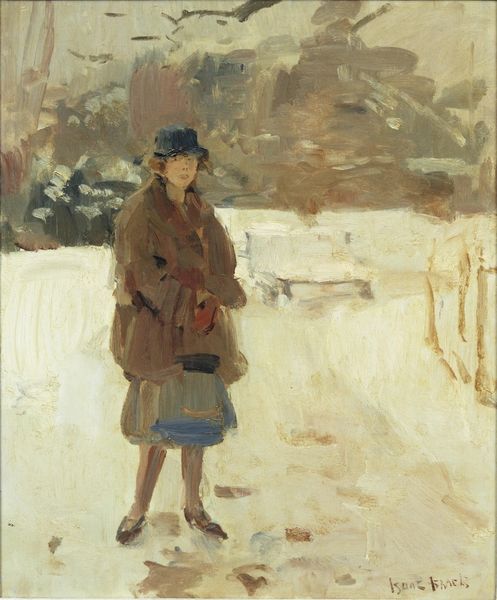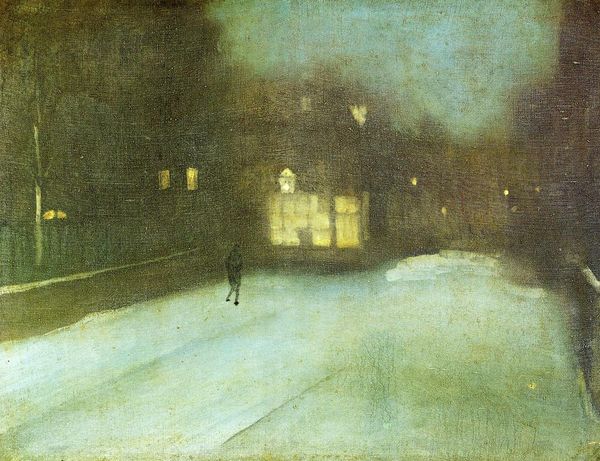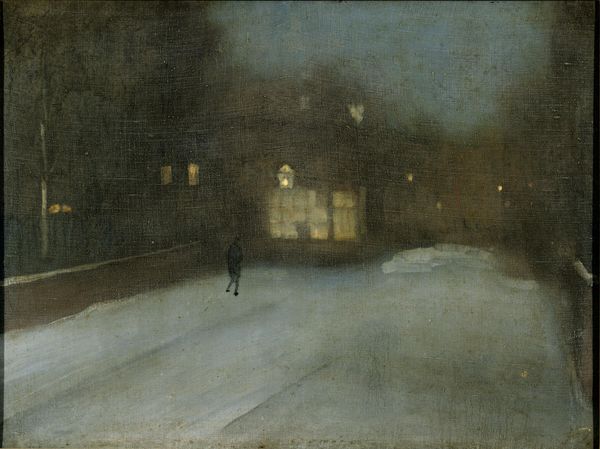
Copyright: Public domain
Editor: We're looking at "The Widow," an oil painting from 1882 by Frank O'Meara. It's... melancholic. A lone woman stands in what appears to be a field, draped in shadow. There's a vulnerability, a real sense of loss in the posture. What do you see in this piece? Curator: Loss is palpable, isn't it? Like the canvas itself has been gently weeping. It's interesting how O’Meara uses such soft, blurred edges. That haziness around her almost feels like a memory fading, don’t you think? There's the romantic idealization of grief there, definitely. Notice the contrast – the muted earth tones surrounding the figure set against the pale shimmer of, I’m guessing, water in the distance. What does that stark division evoke in you? Editor: It’s a contrast between the starkness of grief and perhaps the memory of a brighter, lighter life before her loss. The horizon line almost feels unattainable. Curator: Precisely! And the way those bare trees are almost skeletal? O’Meara was channeling the symbolist mood of his time, where nature reflected inner emotional states. You know, sometimes I wonder if the landscape *is* the widow; barren and enduring, just like her spirit. Editor: Wow, I hadn't considered the landscape as the figure itself. So, the emotional landscape, then. Curator: Exactly. It is as if nature and grief become intertwined. A sort of sad song of nature... Editor: I will carry this landscape thought from now on, thanks! I found my eye gravitating immediately towards the woman, but I completely missed how significant the rest of the setting could be as a parallel expression. Curator: Art is magical as long as it speaks. Happy you enjoyed our conversation.
Comments
No comments
Be the first to comment and join the conversation on the ultimate creative platform.
